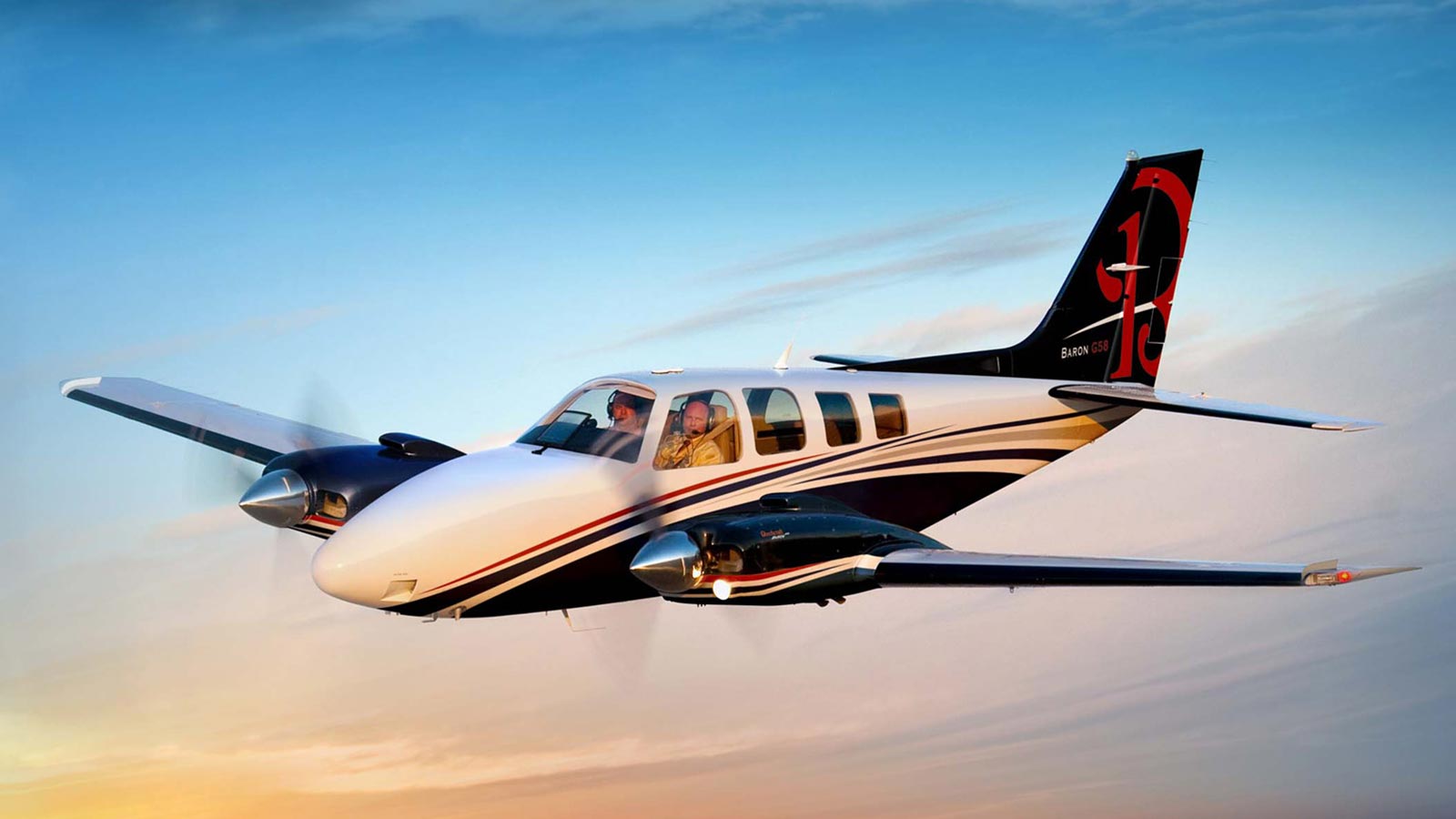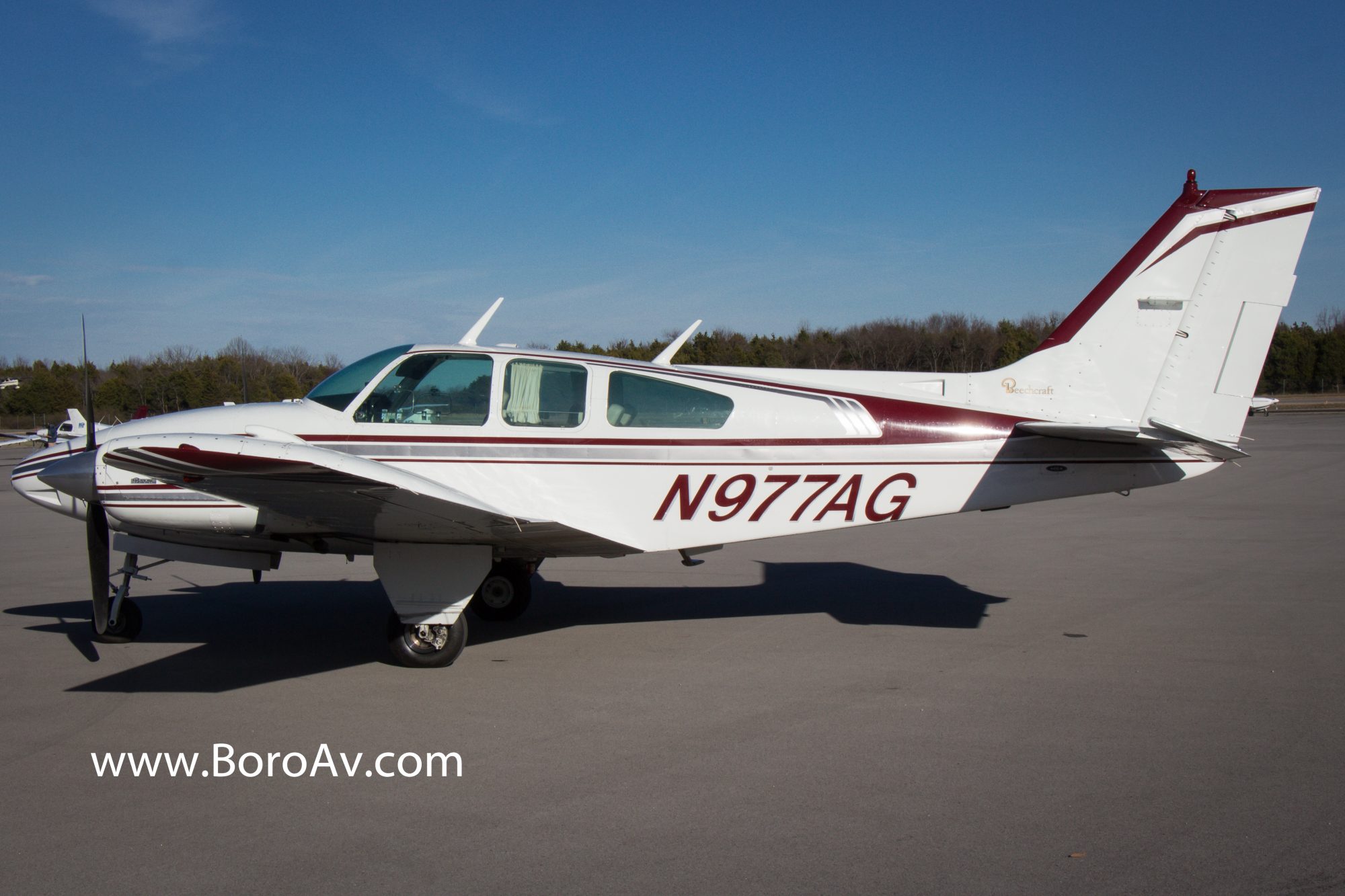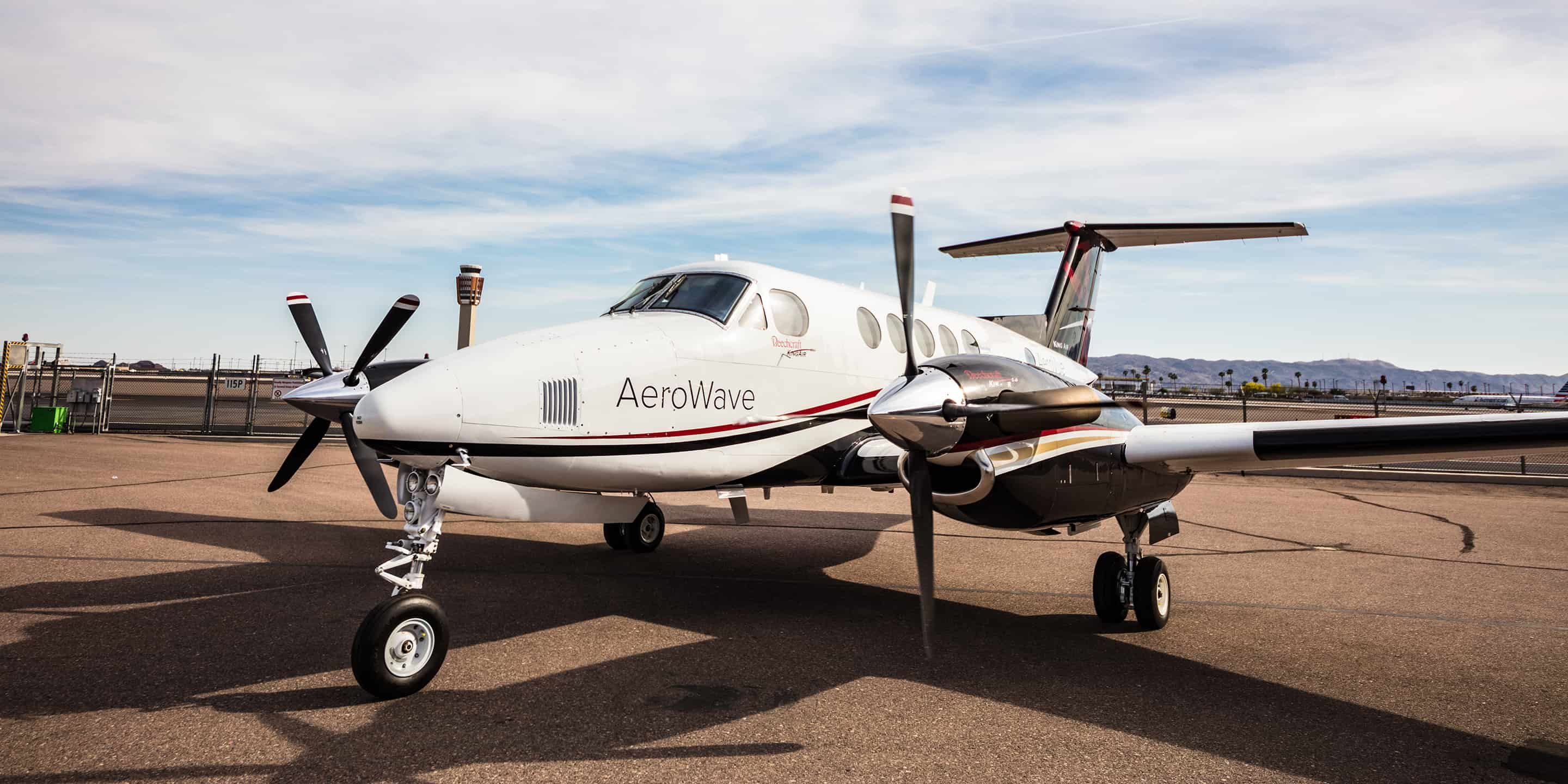Beachcraft Aircraft - A twin, low-wing, tailwheel light aircraft manufactured by the Beech Aircraft Corporation of Wichita, Kansas. Produced continuously from 1937 to November 1969 (over 32 years, a world record time), over 9,000 were built, making it one of the world's most useful light aircraft manufacturers. Sold worldwide as a civilian executive, utility, cargo and passenger vehicle on tailwheels, noses, skis or floats, it has also been used for military aircraft.
During and after World War II, over 4,500 Beech 18s were used in military service: as light transport, light bomber (for China), crew trainer (for bombing, navigation and gunnery), photographic reconnaissance and "mother". to target drones, including the United States Army Air Forces (USAAF) C-45 Expeditionary, AT-7 Navigator, and AT-11 Kansan, and the United States Navy (USN) UC-45J Navigator, SNB- 1 Kansan et al.In WWII , over 90% of USAAF bombers and navigators were trained in these aircraft.
Beachcraft Aircraft

In the early postwar years, the Beech XVIII was the first "business aircraft" and "shepherd airliner". In addition to passenger transport, its civilian uses are aerial dispersal, sterile insect release, fish stocking, dry ice cloud seeding, aerial fire fighting, mail delivery, ambulance service, film productions, skydiving, mercenary, gun and drug smuggling, testbed gineering, skywriting, flag drag and stun planes. Many are privately owned, worldwide, with 240 in the US still on the FAA inventory as of August 2017.
Single Engine Denali Aircraft Joins The Legendary Beechcraft Turboprop Family As Program Progresses Toward First Flight
By the end of the 1930s, Beechcraft management assumed that there was a demand for a new design that would be called the Model 18, which would have a military application and would exceed the major manufacturing capabilities. The design was mostly conventional at the time, including twin radial engines, all metal semi-monocoque construction with fabric covered control surfaces and tailwheel landing gear. A less conventional shape was the twin tail. The Model 18 can be confused with the larger Lockheed Electra series of airliners, which is closely related. The first production aircraft were powered by two 330 hp (250 kW) Jacobs L-6s or 350 hp (260 kW) Wright R-760Es. The 450 hp (336 kW) Pratt & Whitney R-985 became the definitive engine of the pre-war pure C18S. The Beech 18 prototype flew for the first time on January 15, 1937.
The aircraft used various engines and underwent several airframe modifications to increase weight and speed. At least one aircraft was converted to a 600 hp (447 kW) Pratt & Whitney R-1340 plant configuration. With an additional weight of about 200 lb (91 kg) per engine, the concept of a Model 18 fitted with R-1340 engines seemed less feasible due to the weaker structure of the aircraft than the engine mounts. Almost every part of the airframe has been changed.
In 1955, deliveries of the E18S model began; The E18S features a fuselage that has been extended 150mm deeper to allow more clearance in the passenger cabin. All subsequent Beech 18s (sometimes Super 18s) featured this taller fuselage, and some earlier models (including the AT-11) were modified for this larger fuselage. The H18 model, introduced in 1963, developed a tricycle with an optional undercarriage. The unusual landing gear for the pilot model was previously developed under STC by Volpar and is installed at the H18 factory during production. A total of 100 H18 tricycles were manufactured from the ports and more than 240 earlier models of aircraft were modified with this one.
Construction of the Beechcraft Model 18 began in 1970 with the last model being the H18 intended for Japan Airlines.
We Fly: Beechcraft King Air 360
Over the years, 32 variants of the basic design have been introduced, over 200 upgrade kits have been developed, and nearly 8,000 aircraft have been built. In one case, the aircraft changed to a triple tail, a trigear shape, humps, and an appearance similar to a small Lockheed constellation. Another distinctive conversion was made by Pacific Airmotive as the PacAero Tradewind. This made the nose longer to accommodate the wheel of the tricycle, and the model 18's twin fins were replaced by a single fin.
But by the time the United States entered World War II, only 39 model 18s had been sold, 29 of which were for civilian customers.
Work has begun on specific variants of training pilots, bombers and navigators for the United States Army Air Forces (USAAF). Efforts in the army AT-7. Further developments led to the AT-11 cruiser, the C-45 military transport, and the F-2 (the "F" for "Fotorecon", short for "photo reconnaissance"). The US Navy first adopted the Beech 18 as the JRB-1, equivalent to the F-2, followed by the JRB-2 transporter; The JRB was originally called Voyager, but this name was not in use, and JRBs were commonly called Expeditioners like their USAAF counterparts.

The first JRB-1 obtained by the Navy, Bureau Number (BuNo) 09771, was converted from the last civilian model 18 put into production, only for wartime use.
Beechcraft King Air C90
The fleet then acquired several more model 18s such as the JRB-3 (C-45B), JRB-4 (UC-45F), SNB-1 Kansan (AT-11), SNB-2 (AT-7), and SNB-2C ( AT-7C).
The two existing naval Beechs were later converted into the SNB-2H ambulances, the SNB-2P scout trainer and the SNB-3Q electronic measurement trainer.
United States Coast Guard seven JRB-4 and JRB-5 aircraft from the fleet between 1943 and 1947; they were primarily used for transport purposes, together with aircraft later used to convert air maps and others for advanced flying.
After the war, the USAAF became the United States Air Force (USAF) and the USAF Strategic Command, with 18 model variants (AT-11 Kansas, C-45 Expeditionary, F-2 Expeditionary and UC-45 Expeditionary) from 1946 to 1951. In 1950 , the Navy had approximately 1,200 JRB and SNB aircraft in service.
Faa Certificates Upgraded Beechcraft King Air 360
From 1951 to 1955, the USAF rebuilt many of its aircraft with new fuselages, wing sections and undercarriages to take advantage of the increase in civilian designs made since the end of World War II. Eventually, 900 aircraft were rebuilt to resemble th-current D18S models and replaced with new designations, builder numbers, and Air Force serial numbers.
Also in the USN, many of the surviving aircraft were built, including the JRB-6, SNB-5 and SNB-5P.
The Coast Guard retired its JRBs in 1956 and sold most of them as surplus in 1959, but one was retained by the US Coast Guard reserves until at least 1972.

With the adoption of the US Tri-Service Aircraft Designation System in 1962, the Navy's SNB-5 and SNB-5P became the TC-45J and RC-45J, later becoming the UC-45Js as the first mission-driven aircrew training. for the public transportation of the work.
Beechcraft King Air
The C-45 flew in the USAF until 1963, the USN received its last UC-45J in 1972, while the US Army flew its C-45s until 1976. The military in the following years called these aircraft "bug smashers" in reference to their great use in providing a lot of flying hours for the aviators strapped to the Pentagon box.
The Beech 18* was widely used by Air America during the Vietnam War; More or less standard ex-military C-45s were initially used, but the airline had 12 aircraft modified by Conrad Conversions in 1963 and 1964 to increase performance and payload capacity. Among the aircraft changes were the Conrad T-Twos, which increased their maximum weight (MTOW) to 10,200 lb (4,600 kg).
The increase was achieved through a number of airframe modifications, including an increase in the angle of attack of the horizontal stabilizer, reduced mating doors, and aerodynamically enlarged wings. Air America asked Volpar to convert fourteen aircraft to turboprops, powered by Garrett AiResearch TPE-331 engines; The modified aircraft were called Volpar Turbo Beeches and also called for a further increase in MTOW to 10,286 lb (4,666 kg).
Model 18 spar-wing horns are assembled from tubular steel. The configuration of the pipes in combination with the postmarket STC modifications on some of these aircraft allowed for corrosion and cracking to occur in service.
King Air 360
This prompted the FAA to issue an airworthiness directive in 1975 that mandated the fitment of a belt buckle to any Model 18s. This in turn led to the recall of several STC changes to the Model 18*, which the owners of the aircraft decided upon. at a lower cost than modifications. Corrosion in unmodified parts was not a problem; This is due to the additional exposed surface created by the STC drilling process. Additional requirements are imposed by the FAA and other national airworthiness authorities, including additional regulations for the removal of spar-lic belts to check for cracks and corrosion, and spar-radiography. In Australia, the airworthiness authority has set a limit on the life of an airship, beyond which it cannot fly.
First production model with two pilots and eight passengers seated, powered by a 350 horsepower (260 kW) Wright R-760E-2 engine, MTOW: 6,700 lb (3,000 kg)
Various seating two pilots and nine passengers, fitted with 330 horsepower (250 kW) Jacobs L-6 engines, MTOW: 7,200 lb (3,300 kg).

, 420 horsepower (310 kW), sev built, one for air ambulances, six for Nationalist China as M18R light bombers
Beechcraft Super King Air
The first post-WWII variants were introduced in 1945, with seating for eight passengers and an MTOW of 8,750 lb (3,970 kg), 1,035 were built.
Variant with Continuous R9-A engine of 525 horsepower (391 kW) and MTOW of 9,000 lb (4,100 kg);
Hawker beachcraft, clearwater spas beachcraft series, beachcraft king air 200, beachcraft 18, beachcraft plane, beachcraft boats, beachcraft, beachcraft patio furniture, beachcraft furniture, beachcraft 200, beachcraft king air, beachcraft outdoor furniture
0 Comments